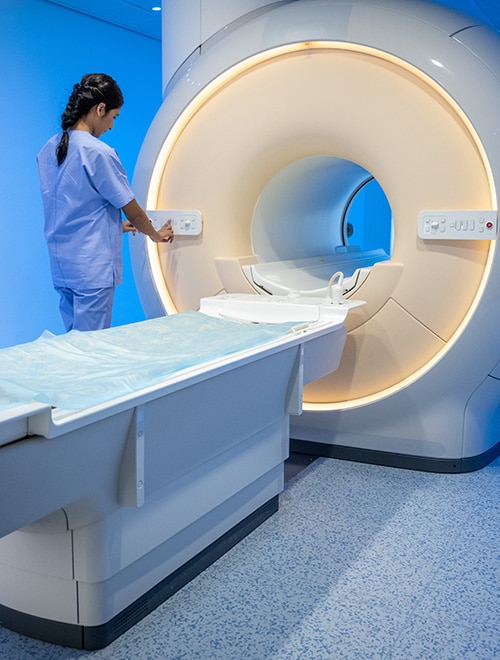- 3 min read
A step in prostate cancer screening
Your GP may be the first doctor to pick up the possibility that you may have prostate cancer from your risk factors, symptoms and PSA test results. If your PSA levels are high, this doesn’t mean you have cancer, but your GP may refer you to a urologist for further tests. The urologist may decide to perform a digital rectal examination (DRE) of your prostate.
What is a digital rectal examination?
This is a physical examination where the urologist checks the size and shape of your prostate through your rectum to feel if there are any abnormalities. This might sound worrying and that’s understandable, as it may feel intrusive and uncomfortable. But it may also be an important part of checking whether you need more testing for prostate cancer.
Ask your doctor how this examination is performed and how it may affect you, so you can feel reassured.
During the DRE, your urologist should make you as comfortable as possible and it should only take a few minutes. It can be done in consulting rooms, so you will not need to go to hospital.
Although the DRE is a simple examination, it may feel invasive, so it’s important that you talk to your urologist and ask any questions you have about the procedure and how it may affect you.
What happens during a digital rectal examination?
Your urologist will use gloves and a lubricant, so you are more comfortable. They will gently place a well-lubricated finger into your rectum to feel the size, shape and texture of your prostate. They are feeling to see if the prostate is enlarged or has any abnormalities or lumpiness. After the DRE, you can go back to your normal day’s activities.
Does a digital rectal examination help to diagnose prostate cancer?
Diagnosing or ruling out prostate cancer isn’t a simple task and can involve many examinations and tests. The DRE can be a quick and helpful way to check if your prostate is showing any physical signs of cancer. However, like PSA testing, it doesn’t diagnose prostate cancer. It can only show signs that you might have the disease and whether more testing is needed. Sometimes prostate cancer can be felt this way, but a normal DRE result does not necessarily rule out prostate cancer.
What happens after a digital rectal examination of the prostate?
It’s important to know that an abnormal prostate size or shape doesn’t always mean you have cancer, but similarly, a normal DRE result doesn’t mean you don’t have cancer. A biopsy is the only way to diagnose prostate cancer, but before taking that step your urologist will review your:
- DRE results
- PSA tests
- Age
- Family and medical history
- Other risk factors
If these show that there is a possibility that you may have prostate cancer, your urologist may suggest you have a magnetic resonance imaging (MRI) scan before recommending a biopsy. The MRI will give an image of the size and shape of your prostate and will show any abnormalities.
It may be helpful for you to read about imaging tests, such as MRI, and find what is involved in a prostate biopsy, before deciding on the next steps with your urologist.
Talking to family members, friends or other men who have been through the same experience may also help you feel more comfortable and confident about your next steps. Have a look at what support groups are available near you or reach out to a PCFA nurse for any suggestions or advice.
Key points
- If you have elevated PSA levels or are at high risk of prostate cancer, your doctor may recommened seeing a urologist for a digital rectal examination (DRE).
- This is a physical examination to feel the size and shape of your prostate.
- A DRE does not diagnose prostate cancer, but may indicate if there is a problem with your prostate. Only a biopsy can diagnose prostate cancer.
- Your urologist may recommend a MRI scan after your DRE, which can show any abnormalities on an image, before discussing whether a biopsy is needed.






